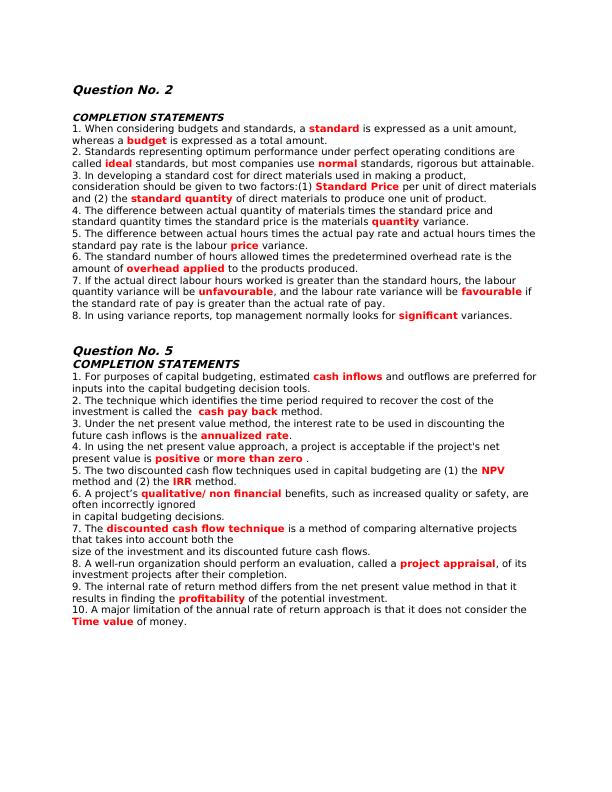Completion statement | Practical Law
Calculate the total overhead variance, variable overhead budget variance, and fixed overhead volume variance.
1 Pages517 Words18 Views
Added on 2022-08-25
Completion statement | Practical Law
Calculate the total overhead variance, variable overhead budget variance, and fixed overhead volume variance.
Added on 2022-08-25
ShareRelated Documents
End of preview
Want to access all the pages? Upload your documents or become a member.
Benefits of Budgeting, Budgeted Income Statement, Variance Analysis, Cost Estimation and Activity Based Costing
|6
|935
|344
Cost and Variance Analysis for Desklib
|5
|566
|463
Capital Budgeting Analysis for Booli Ltd's New Product Proposal
|19
|3251
|364
Sales Budget and Cost Variances: Calculations and Analysis
|12
|3002
|497
ACC211: Booli Enterprise Manufacturing of Electronic Goods PDF 2023
|17
|3051
|64
Cost Accounting Concepts for Management Accounting
|12
|1150
|456

